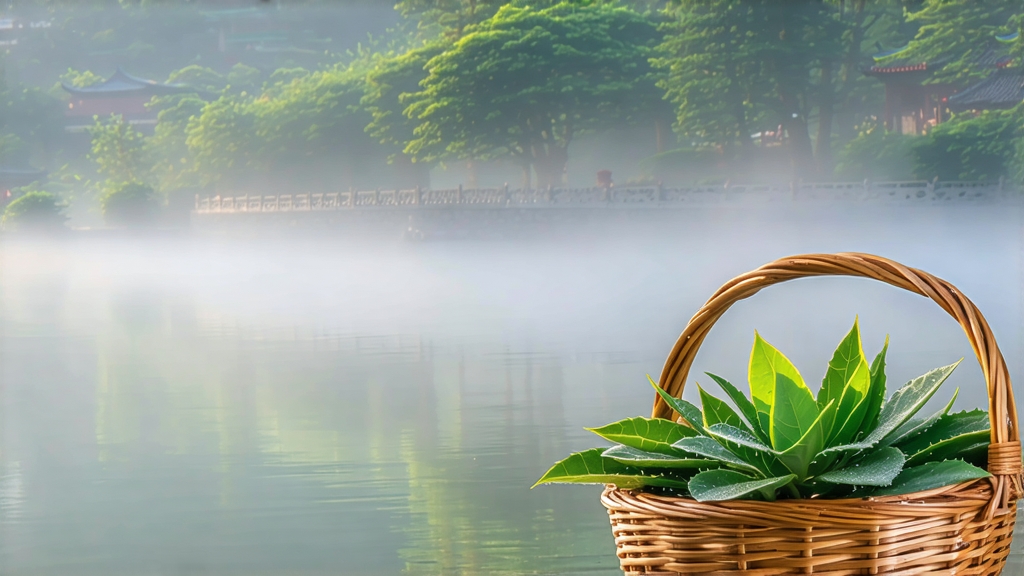
Longjing, literally “Dragon-Well,” is more than a green tea; it is a liquid manuscript of Chinese aesthetics, geography, and etiquette. First celebrated during the Tang dynasty and canonized in the Qing imperial court, this flat, jade-green leaf from the hills surrounding Hangzhou’s West Lake has become the benchmark against which all Chinese green teas are measured. Yet within the single name Longjing hides a microcosm of micro-terroirs, craft lineages, and sensory codes that even many domestic drinkers barely decode. This essay invites the international reader to step beyond the souvenir tin and listen to the whisper of the dragon.
History: From Buddhist grottoes to global auction blocks
The earliest written record appears in Lu Yu’s “Classic of Tea” (760 CE), which describes “a well south of Lingyin Temple whose water sweetens tea.” Locals linked the well to a rain-making dragon; the nearby mountain stream was accordingly dubbed Dragon-Well. By the Song era, monks at the Tianzhu and Yunqi temples were already pan-firing leaves to preserve their spring aroma for meditation vigils. When the Qianlong Emperor visited Hangzhou in 1751, he planted eighteen tea bushes on Lion Peak (Shi Feng) and conferred imperial status; those bushes still survive, fenced but verdant, their clonal offspring sold by gram at prices rivaling silver. In 1949 the new government nationalized the gardens; in 1972 Premier Zhou Enlai served Longjing to President Nixon, sealing diplomatic thaw with fragrance. Today, pre-Qingming Longjing fetches over 10,000 USD per kilogram at charity auctions, and blockchain QR codes trace each leaf back to a specific row of bushes.
Terroir: Five peaks, one lake, countless dragons
Authentic West Lake Longjing occupies barely 1,680 hectares split among five sub-zones. Shi Feng, the highest and steepest, yields leaves with the most amino-sweetness because morning mist refracts sunlight into soft, diffused photons that slow tannin build-up. Mei Jia Wu, a warmer valley, gives grassier, more full-bodied infusions. Weng Jia Shan, Tiger Spring, and Yun Xi complete the pentagon. Soil is quartz-rich, acidic, and drains rapidly; the lake acts as a thermal regulator, preventing autumn frost that would shorten the plucking window. Within each zone micro-plots—often no larger than a tennis court—carry family names: “Uncle Fang’s Back Slope,” “Auntie Chen’s Well Edge.” These plots are the Burgundy climats of tea.
Cultivars: Beyond the ubiquitous “#43”
Most exported Longjing derives from Longjing #43, a 1980s clonal selection prized for early budding and uniform emerald color. Purists, however, chase the old-tree Shi Feng variety (qunti zhong), a sexually reproducing population whose leaves are smaller, paler, and more mineral. A third cultivar, Zhong Cha 108, bred for frost resistance, adds floral top-notes but lacks the chestnut finish. Each cultivar responds differently to the same pan-firing hand, so a master will adjust wrist pressure by feel rather by recipe.
Craft: The dance of hand on iron
Within four hours of plucking, the morning’s basket must reach the firing room. A traditional wok is heated to 80 °C, brushed with tea-seed oil, then wiped spotless. The master swirls 100 g of leaves, pressing, trembling, flicking—ten distinct motions codified as “grab, shake, rub, throw, fan, press, push, grind, buckle, release.” Temperature is modulated by ear: when leaf moisture drops 20 %, the sizzle deepens; the wok is allowed to cool to 60 °C for the second stage that sets the flat sword-shape. One kilogram requires 70,000 gestures and six hours. Machines can mimic the shape in forty minutes, but the cell walls are sheared rather than coaxed, releasing grassy volatiles that mask the bean-like sweetness. A practiced hand leaves the leaf intact yet enzymatically quiet, a green tea that will age gracefully for twelve months if stored at 5 °C and 45 % relative humidity.
Grades: Reading the leaf’s CV
Chinese nomenclature is merciless. Pre-Qingming (before 5 April) leaves plucked at one bud plus one unfolding leaf, length under 2.5 cm, constitute the